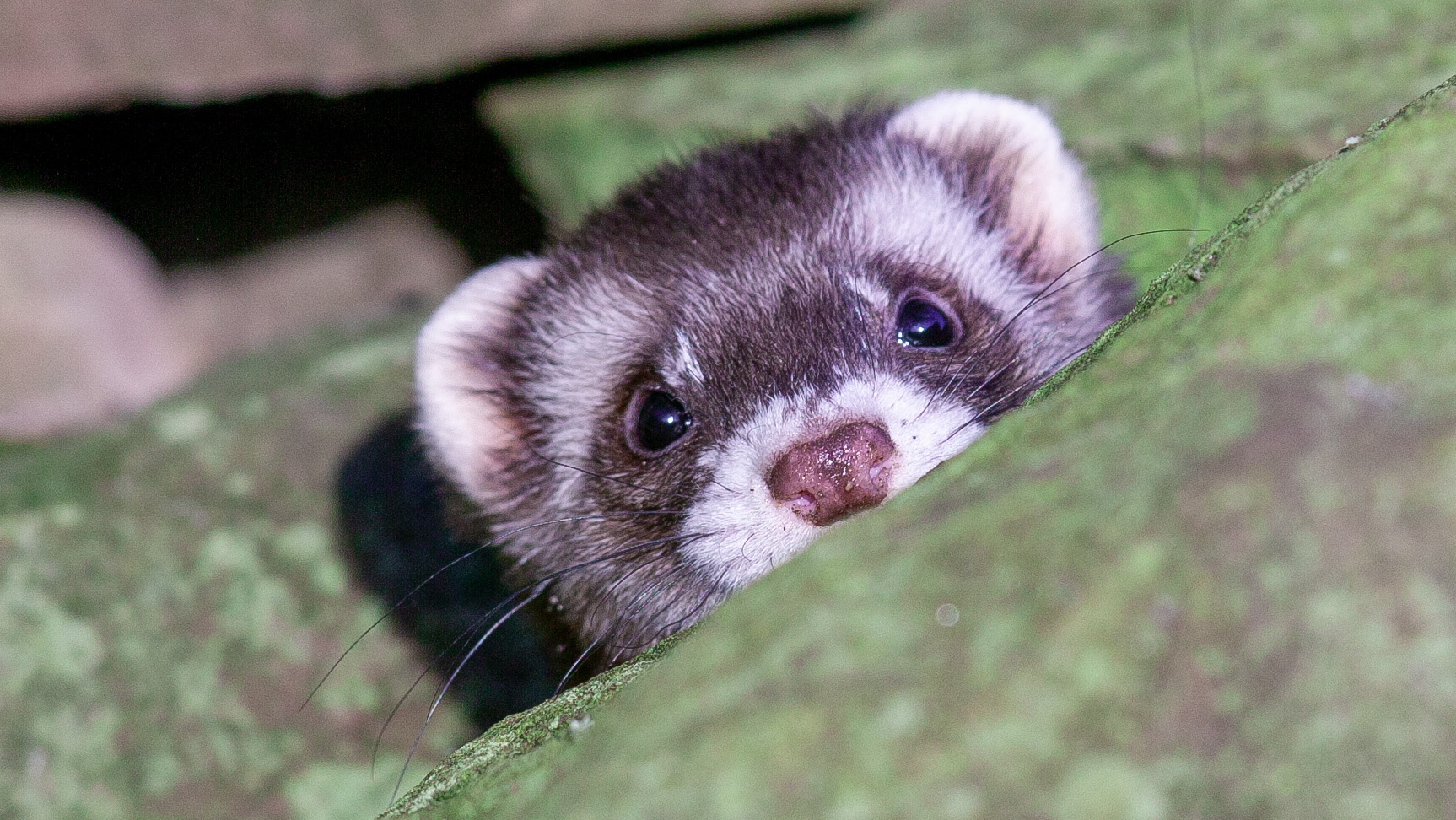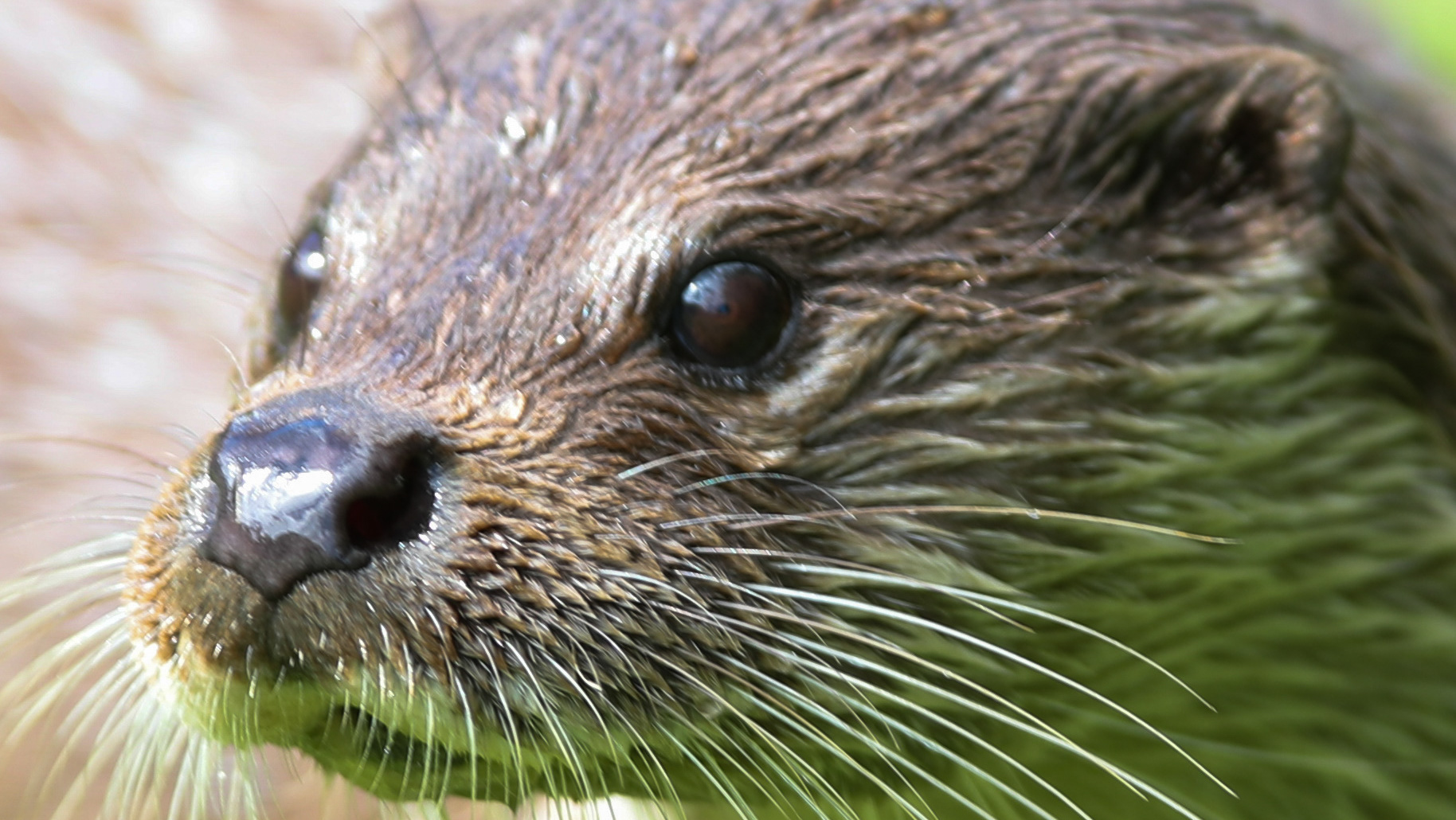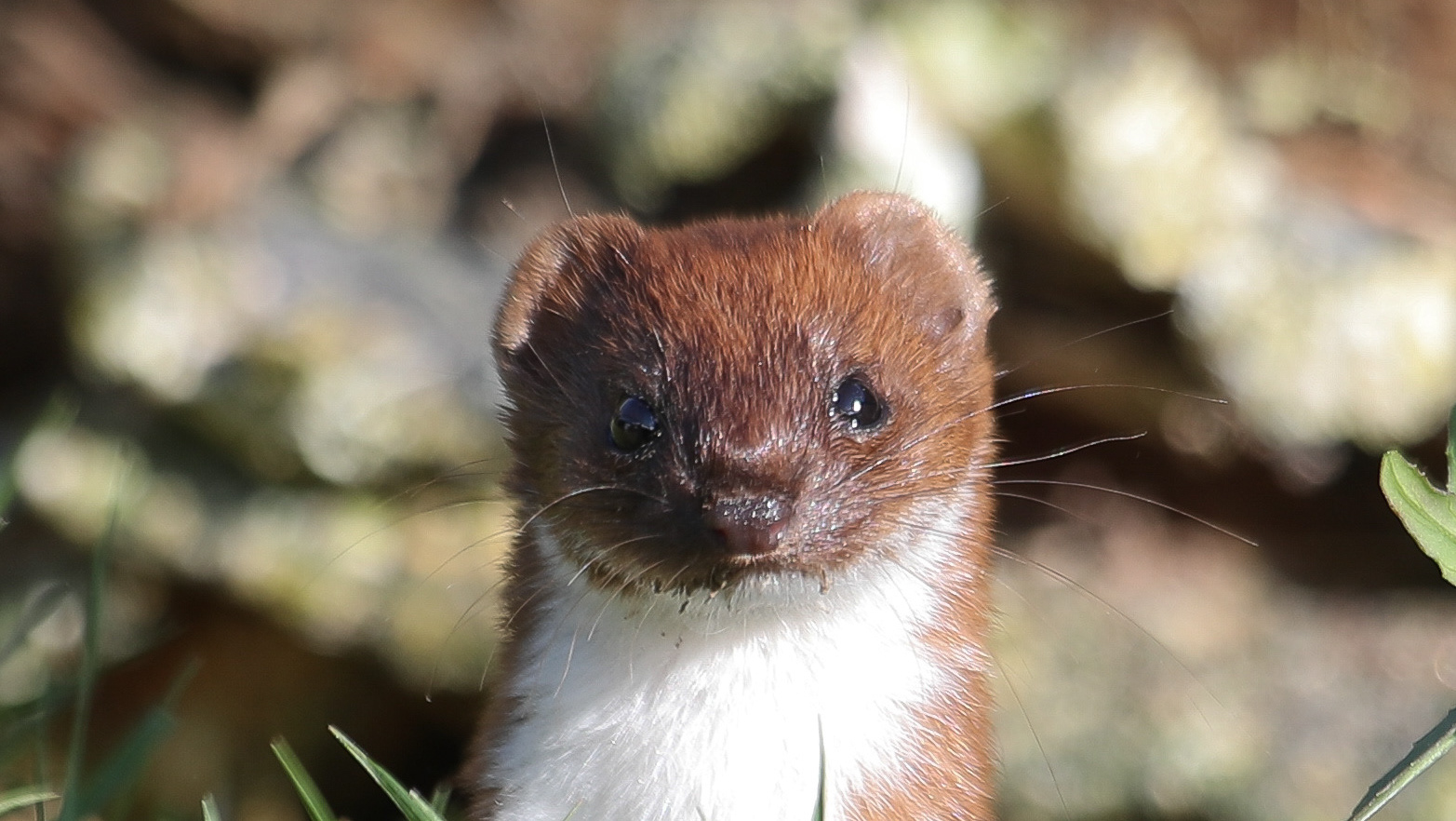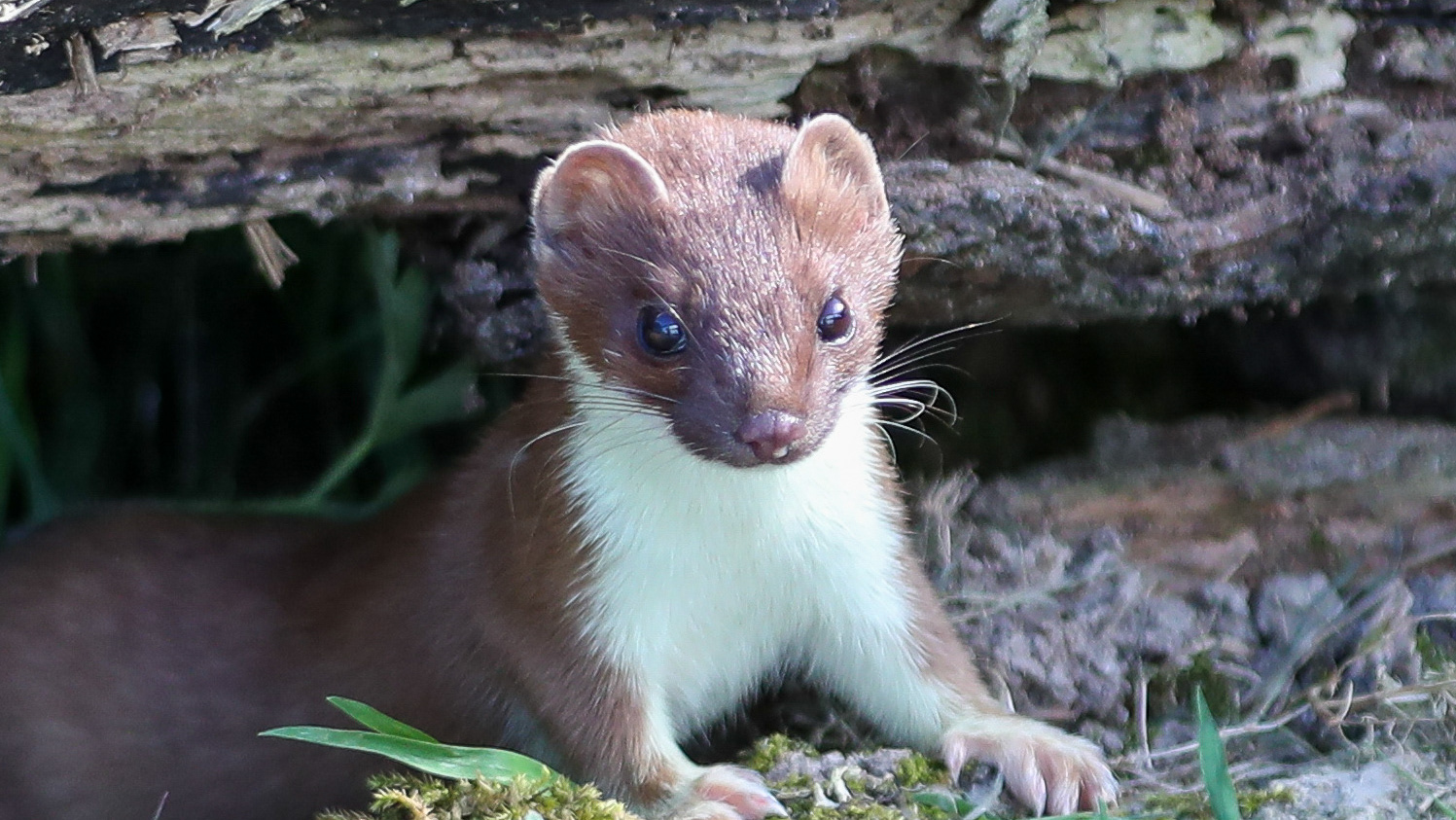Polecat
The description “arched furry brown snake” was used to describe a polecat by a security guard in Halton who had encountered one during his nightly patrol. The polecat’s look would be unique in the county’s fauna, even within the weasel sub-family, but for the striking similarity to some, but not all, ferret hybrids. However, records suggest that wild hybrids are rare in the recording area and continued vigilance regarding identification will hopefully confirm this.
After less than promising prospects at the dawn of the twentieth century, the Polecat was thought to have had a stronghold restricted to a small area of West Wales, but even in the early 1900’s singletons and small pockets were reported from elsewhere in Wales, Shropshire, Cheshire to as far away as Newcastle, Northamptonshire and Essex. The come-back was enabled mainly by the onset of global conflicts that saw gamekeepers giving up their positions to go and fight, with many of them not returning, and those that did return not necessarily returning to their old occupation.
The steely grip on predator control was loosened at last and Polecat numbers not only stopped plummeting, but steadily increased in numbers. This allowed the recolonisation process, enabling dispersal across both the county border with Shropshire from the south and across the English/Welsh border into Cheshire from the west - though several unconfirmed records exist for Cheshire from the early 1930’s - and reestablishing a sustainable population by the 1990’s. The polecat is faring well in the county at the moment and we owe much of this information to the activities and recording efforts of naturalists who are examining/collecting roadkill, and reporting polecat activity either by direct observation or recorded on their trail cams. Though we have to be careful regarding the identification of true polecat from grainy or burnt out trail cam footage, we can gain some confidence from the continued confirmation of true polecat from the roadkill. The Cheshire Mammal Atlas reported that ‘the examination of several road-kill polecats in recent years has revealed only pure wild polecat characteristics and no traces of ferret’, and the work undertaken by The Vincent Wildlife Trust produced a report in 2008 that categorised Cheshire samples as being in the highest category of ‘polecat purity’ (at least 95%). Johnny Birks, author of the splendid Whittet book ‘Polecats’, and leader for the Vincent Wildlife Trust on numerous mustelid projects, has helped us with the identification on some of the more challenging specimens that we have stills/footage of.
To summarise the Cheshire landscape as ‘good for polecat’ would be a little word-frugal so what is it about the county that sustains a viable population, a population that appears to be growing. I suppose we can break it down into perhaps four obvious categories; food, cover, connectivity, and persecution levels. It is likely that an adequate amount of the first three categories and a suppression of the last category is key; a sort of polecat-conservation Goldilocks zone.
As polecat are pretty much catholic in their choice of prey, be it fish, vole, rabbit, frog etc, the peaks and troughs in populations, be it a seasonal glut such as amphibians travelling to a pond, or a decimation of a population through illness, such as happens to rabbits (myxomatosis), impact a lot less. Polecat are known to feed on carrion too, and unfortunately the road-buffet is always open, paradoxically being able to claim a polecat’s life as well as sustaining it.
The Cheshire Plain is synonymous with dairy production and at one time small herds connected to small holdings were scattered across across the pastoral landscape. In recent history dairy production has decreased and many small herds have been subsumed into much larger commercial herds at fewer farms. Many farm buildings have been developed wholly or partially, resulting in desirable properties that command premium prices, prices high enough to attract residents that wouldn’t want an untidy smelly farm with milking parlours, slurry pits, spilt grain, noisy livestock and associated ‘vermin’. Untidy working farms that have limited or no use of poisons are excellent habitats for polecats.
Though DEFRA only has to record data on poultry if the numbers reach forty birds, there has a been estimates in the last decade that garden poultry collections could have reached up to 750,000 collections, simply for low-level egg production or for a hobby and Cheshire has its share though not restricted to rural dwellings but enjoyed in suburban and even urban areas too. Polecats can take advantage of ill fitting enclosures and can also feed on the mammals that are attracted to the spilt food. The same applies to game bird production areas but gamekeepers are better equipped to deter polecats and/or dispatch of them.
Cheshire is still heterogenous in its habitats and structure, not through purposeful design for wildlife conservation but often as a by-product of transport and industry. Other features have survived simply because they have been spared the plough due to the terrain, such as the clough woodlands. Boundary features Such as hedgerows are mainly leftover from the enclosure (inclosure) act and the 27,000 plus field ponds are the landscape pockmarks from the marling industry, now relics from the agricultural past.
Connectivity throughout the recording area is adequate, especially for the likes of polecat, a species that may not actually prefer water to terra-firma but certainly wouldn’t regard it as a barrier. However, quite a few polecats that have been found dead on roads have been located at a point where a ditch or stream reached a culvert or low bridge.
Though the polecat was disappearing fast from the county, and England, by the mid 19th century, the odd record – such as this one, on this occasion from the author’s home town – can be found.
Though the polecat was disappearing fast from the county, and England, by the mid 19th century, the odd record – such as this one, on this occasion from the author’s home town – can be found.
‘A pole-cat, weighing 3.01 lb, was lately shot in a wood near Frodsham, Cheshire. Hull Packet and Ryding Times - Friday 29 March 1850’
As the weight was nothing unusual we must assume that the occurrence was.
AH





